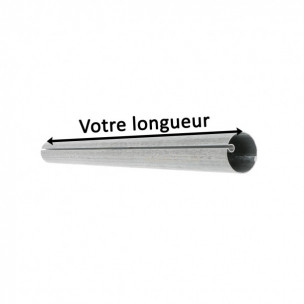

This is because tapping any tube near the bad tube appears to be bad as well. In a guitar amp with many preamp tubes it can be difficult to determine which one is microphonic. All tubes will amplify tapping to some degree but an unusable tube will be very loud and often feedback or squeal. A microphonic tube will ring and amplify any outside noises such as bumping the amp, tapping on the bottle, or even footsteps as you walk across the floor. Problems with preamp tubes are often due to microphonics and noise issues.

If the visual inspections mentioned earlier do not help locate a bad tube we recommend hiring a technician to inspect your amp. If the replacement fails immediately it’s often a sign of a failed power/output tube or amplifier fault. Check and replace and blown fuse and try again. In the event your amplifier will not power on, it is almost certainly due to a blown fuse. If not, the amp will eventually blow a fuse or worse damage other parts. This is a sign that that specific tube is failing and in a “run-away” state were the current can’t be controlled by the bias voltage. But there are times when a properly biased amp has a tube that begins to red-plate. This is sometimes due to wrong biasing of the amp, which really isn’t a tube problem. We should also mention that when it comes to power/output tubes another issue can be red-plating. All tubes will have some degree of noise when you do this as the grid and screen wiring vibrate so don’t mistake that for broken connections. You can gently shake the tube as well and listen for rattling. Perhaps the most obvious thing to look for is any loose parts that have broken off inside the bottle. The purple glow around wires or other elements indicates leakage and a tube with this should be discarded. Do not confuse this with blue glow that is often cloudy and near the glass. Third, look for a purple glow that is very focused around specific elements inside the tube. If you see this you know with 100% certainty that the tube is bad.
#The tube store crack
When a vacuum tube develops an air leak (a small crack or bad seal by a pin for example) this getter color will change to pure white. Any color from grey/silver, to black is healthy. This is the greyish coating usually found at the top of a tube, but can be on the sides, or both top and sides, depending upon the tube type. The second thing to look for is the condition of the getter. If the filament has failed the tube is useless. The tube must be heated in order to function. In these cases you can carefully check if the tube is hot or cold. There are some tubes that have their filaments well hidden making it nearly impossible to see. What matters is that it is glowing to some degree. In some tubes it’s more intense than others, but this is not a problem.

First, every tube will have a heater filament that, when working, will cast a nice warm orange glow. There are a couple very obvious things to look for. But keep in mind the same issues will arise in hifi stereo tube amplifiers and preamplifiers so audiophiles will find this article useful too. We’ll go over some of the most common scenarios that a guitar player might find with his or her guitar amp. Well although not all tube problems can be found without a tester, many problems can be. You’re doing sound check before a gig, something sounds wacky, and now you’ve got to figure out what’s happening.
#The tube store how to
We are often asked how to determine when a tube is bad without access to a tube tester.


 0 kommentar(er)
0 kommentar(er)
